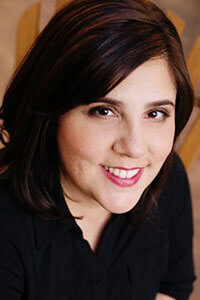
Mindfulness can increase levels of focus and productivity, author Leah Weiss says in “How We Work: Live Your Purpose, Reclaim Your Sanity, and Embrace the Daily Grind.” (Illustration by Red Nose Studio)
When Convene asked the respondents to our 2018 Salary Survey to tell us what they like least about their jobs, we got — as we do every year — pages and pages of comments. They included laments about working crazy hours under pressure; the high intensity of work that’s required in the crunch right before a meeting begins; coping with ever-rising expectations of clients and bosses; as well as the strain of being away from family and home for extended periods due to business travel.
Much of that can be attributed to the very nature of producing live events where any number of things can go wrong. In fact, event planners landed in the fifth spot on CareerCast.com’s 2017 list of the most stressful jobs, sandwiched between police officers and newspaper reporters. But many of the complaints were more universal: departments full of bullies, unforgiving perfectionists, and drama, along with feelings of isolation and a lack of respect from others.

Leah Weiss
All of those of complaints are common in the workplace, according to Leah Weiss, author of the recently published How We Work: Live Your Purpose, Reclaim Your Sanity, and Embrace the Daily Grind. “We live in a culture that values not only productivity but also profit and promotion at any cost,” Weiss writes, “one that rewards jerks who elbow nice people out of the way, and that creates toxic work environments.” Happily, that’s changing, Weiss said. The world’s top business schools now teach students how to be more compassionate leaders, among them the Stanford Graduate School of Business, where Weiss has taught “Leading With Mindfulness and Compassion” for nine years.
Mindfulness has its skeptics, including the student who asked Weiss, “Is this class going to be a lot of hippie b.s.?” But multiple studies have shown that regular mindfulness practices — which Weiss describes as the intentional use of our attention — have many benefits. Mindfulness can increase levels of focus and productivity and enhance our ability to read other people’s emotions accurately, as well as improve our responses to chronic stress and pain, Weiss notes in her book.
In addition to reducing workplace stress, mindfulness can strengthen what has been described as “soft” skills, including communication, adaptability, and creativity. In a 2015 survey of nearly 900 executives, 92 percent of respondents said that soft skills were equally or more important than technical skills — and nearly that many, 89 percent, said that they were having difficulty finding employees that possessed soft skills.
All of this has helped to make mindfulness an industry valued last year at $1.1 billion. In 2016, 22 percent of businesses “had some sort of mindfulness program, a percentage which was expected to double in 2017, Weiss told Convene. “If you look at the numbers, it’s normalized. I don’t think there’s really a doubt [about its value in mindfulness], in terms of the research.”
Mindfulness in Action
But there is a challenge with how mindfulness is being adopted in the workplace, Weiss said over a latte in a Manhattan coffee shop, in the middle of rounds of interviews promoting her book. When many people hear the term mindfulness, they think of sitting quietly and doing nothing — which isn’t work-appropriate behavior most of the time. “It doesn’t help,” Weiss said, “that the majority — not just some, but pretty much all of the spokespeople for this — are out there talking about meditate, meditate, meditate. I don’t know that that’s practical. You’re at work to get stuff done.”
Weiss, who became a serious student of Tibetan Buddhism when she was in her 20s, also points out that a single-minded emphasis on sitting meditation is not traditionally the way that mindfulness has been practiced in the countries where it originated. “They don’t actually emphasize meditation in the same way that we do now, in this sort of evangelical mindfulness moment,” she said. “I was fortunate to spend a lot of time in Tibetan refugee communities, and you see people so clearly applying ideas of the practice of mindfulness, of compassion, during their work and in their parenting and in everything they’re doing.” Thinking of mindfulness as a mindset, instead of a narrow activity, Weiss added, is much more helpful.
Related: What is Mindful Meditation (And How Do You Do It)?
While Weiss was a student, earning a master’s degree in social work and a Ph.D. in religious education, she interspersed academic work with meditation retreats lasting as long as six months. When she became a working mother — Weiss also teaches in Stanford’s Compassion Cultivation Training program, founded by the Dalai Lama, among other institutions — that all changed, she said. “I knew from the experiences I’ve had in retreats that I know how to access [mindfulness] in a much more still, quiet space. I had to relearn, ‘What does that look like when you’re not on meditation retreat?’ Forget having nine hours, or 12 hours a day to practice, let alone two hours a day.”
The course she developed for the MBA program targeted research and practices in management, leadership, mindfulness, and compassion, with an emphasis on the workplace. “How do you apply this to giving an employee challenging feedback?” she said. “Is it possible to fire someone compassionately? What does training in a corporate setting look like for these principles?” Her book is intended to encapsulate what she teaches in the course, she said. “My starting place,” she said, was, “What is the core content that I am finding that is landing with people in the most impactful way for the students and the organizations that I have been working with?”
Weiss had another motive as well. “I wanted this book to be what I needed,” she said. “I have three very young kids and it’s hard. Silicon Valley is extremely expensive, and there’s just a lot of pressure. I was thinking a lot about the people that I work with, and the crunches that they experience in role conflicts and just feeling like there’s never going to be enough hours in the day to be who you want to be professionally and personally and as a parent.”
Here are some of the key skills associated with mindfulness that Weiss unpacks in her book.
Knowing Your Purpose
Spending time thinking about purpose is not something reserved for the very young or for those at the top, according to Weiss. “The research shows that there are real, measurable benefits to having a sense of purpose at work.”
Judging from responses to our Salary Survey, meeting professionals are adept at articulating a sense of purpose at work. The answers to our question, “What do you like best about your job?” ran pages long as well, and responses included “the ability to be creative and find solutions to existing challenges,” “building relationships and exciting, fulfilling experiences for exhibitors and attendees,” “the ability to be a change agent,” and “educating physicians and other health-care professionals in the oncology space for better patient outcomes in cancer treatments.”
It’s important to be able to define our purpose because, “when our larger goal or purpose is clear,” Weiss writes, “we know where to put our attention. We can tackle the task at hand instead of focusing on, say, a negative reaction from a colleague or the emotions we feel as a result of that reaction. If our purpose is squarely in mind and we are able to focus on that higher purpose, we don’t get carried away by emotions or unwanted events.”
Emotional Rescue
That’s not to say that we should banish our negative emotions — which isn’t possible or desirable, according to Weiss. Emotional suppression, in fact, is the No. 1 barrier between us and our purpose, she writes. “Thinking the feelings themselves are the problem, we try to get rid of them or ignore them altogether, not realizing how much of our mental resources are burned up in the effort. Emotions may seem like a liability much of the time, especially at work, but in fact, our emotions are an asset.”
The current research on emotions is that emotions live in the body, she said. “They’re not separate from physical experience.” It’s possible to learn what emotions are and how they function, and to apply skills that allow you can regulate them and engage with them in a productive way, “not just stuff them and try to be professional, or be a mess,” she said. “When we pay attention to our bodies, we can catch emotional information as it heads upstream, before it hijacks our whole system.”
Cultivating Compassion
When Weiss is teaching on the topic of self-compassion, she often asks students to think about a time that they messed up at work. “You dropped the ball, you got something wrong. You blew it. What was your reaction to that?” she asks. “And for many folks, you get these wildly disproportionate reactions, like, ‘I’m a consultant and I got a statistic wrong on a slide. I wanted to quit my job because I was so ashamed, I could never face anyone, again.’ Wildly disproportionate, right?”
Related: Why You Should Give Attendees a Little Time to Reflect
Weiss asks students to submit, anonymously, examples of their self-criticism. When they are read aloud, “people would really understand — you’re sitting in this room thinking you’re the only person who feels like an imposter, that you’re the mistake that was let into the business school at Stanford and meanwhile, almost everybody else feels that way. Sometimes, if you realize that, not only does it make you feel better emotionally, it gives you a line of sight into what’s happening for people, what motivates them. That person who’s on your team who’s dominating or dropping the ball — no one sets out to be jerk.”
In some ways, according to Weiss, the impulse to turn inward when things go awry is useful — it focuses our attention on what went wrong. “The problem is that negative scripts don’t help us view ourselves or the problem from a perspective that will lead to solutions or improvement,” she writes. “The good news is that when we realize we’re replaying a script, we have the option to rewrite it. This takes time, patience, and practice — it doesn’t happen at the flip of a switch.”
If there is one takeaway that she would like people come away with, Weiss told Convene, it is that things like knowing your purpose, becoming more self- and interpersonally aware, and becoming more compassionate, may sound like ideas, but they are actually highly trainable skills. “And if you improve them, your workforce is going to be healthier and happier — and they’re going to make more money.”
Learn more about Leah Weiss’ work at leahweissphd.com.
Barbra Palmer is deputy editor of Convene.
Test Time

(llustration by Red Nose Studio)
Earn one clock hour of certification credit. Once you’ve finished reading this article, read the following material:
- “10 Ways to Be More Mindful at Work,” an article with practical ways to stay in the present moment to perform at your best even during your busiest days at mindful.org.
- “Mindfulness as a Management Technique Goes Back to at Least the 1970s,” an article about the origins of mindfulness as a business strategy at Harvard Business Review.
To earn certification clock hours, visit pcma.org/convene-cmp-series to answer questions about information contained in this CMP Series article and the additional material.
The Certified Meeting Professional (CMP) is a registered trademark of the Events Industry Council.
